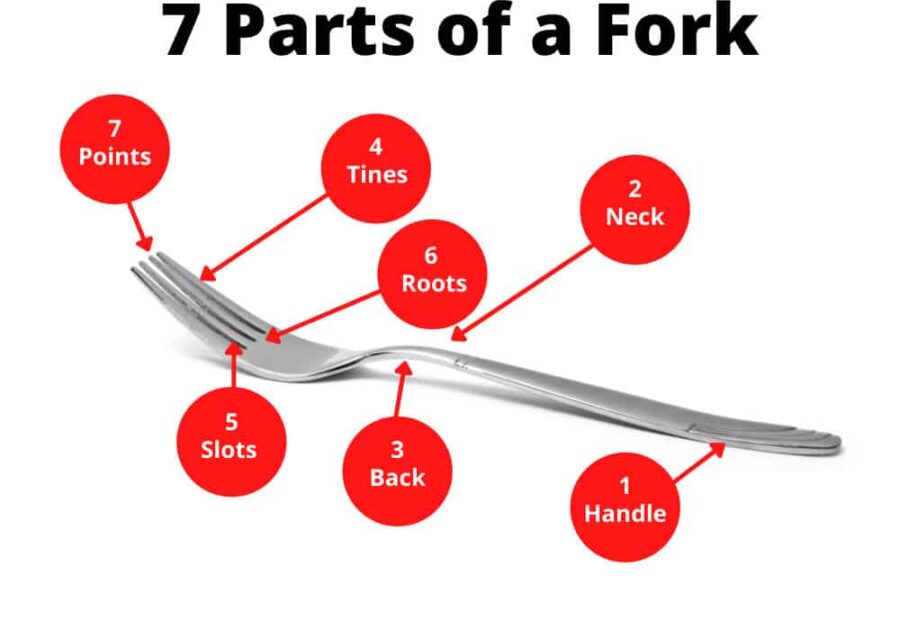The humble fork – we take it for granted, don’t we?
They’re in every home and restaurant. No one gives a second thought to using them, but believe it or not, it hasn’t always been this way.
In fact, it wasn’t until Italians popularized their use in the 16th century that the use of forks became widespread and began their journey in dining rooms the world over.
Prior to that, people mostly used their fingers when eating, but as hygiene practices changed for the better, the use of forks shifted from an elite privilege to that of an everyday utensil.
Forks have evolved from crude instruments to the utilitarian design we’re all so familiar with today. From tip to tip, they comprise seven individual parts, each designed for making most people’s favorite past-time, eating, as enjoyable as possible.
The parts of a fork include the handle, the neck, the back, the tines, the slots, the roots and the points. If you don’t have a fork handy, you can imagine holding one in your hand (or refer to the image we’ve created) while we take a quick visual tour down this marvel of silverware.
Let’s look at each component in more detail.
Parts of a Fork
1. Handle
This is simple enough. It’s the part used to hold the utensil in your hand. Materials used might include wood, stainless steel, silicone or plastic.
2. Neck
As the handle extends downward, it narrows into what’s known as the neck. This is also the point at which the fork widens.
3. Back
When viewed from the side, the back is easy to see. It is the point at which the fork curves from the handle to the tines.
4. Tines
The tines (or prongs) are the most distinguishing feature of the utensil. Depending on the fork’s purpose, the tines can have a sharp point or a blunt one. The tines allow us to hold food in place while cutting meat or vegetables or twisting it for something like pasta.
5. Slots
Slots are the open space between each tine.
6. Roots
The root of the fork is where the slots close or end.
7. Points
The points are the tips of the tines used for holding food in place.
Now that you’re familiar with the parts of a fork, you might wonder why some have more tines than another. In fact, forks can have anywhere from two to four tines depending on the desired usage.
Types of Forks With Two Tines (Prongs)
- Carving fork
- Cheese fork
- Chip fork
- Cocktail fork
- Crab fork
- Fondue fork
- Fruit fork
- Pickle fork
- Serving fork
- Snail fork
- Toasting fork
Types of Forks With Three Tines (Prongs)
- Dessert fork
- Oyster fork
- Pastry fork
- Spaghetti fork
Types of Forks With Four Tines (Prongs)
- Dessert fork
- Disposable fork
- Fish fork
- Pastry fork
- Table fork

I’m Griffin and I make my living as a freelance writer and wannabe sci fi author. Besides my obsession with words, I have a few others which may or may not include craft beer, backcountry hikes and spending time with loved ones – preferably in that order. Thanks for checking out my work and I hope you enjoy it!

